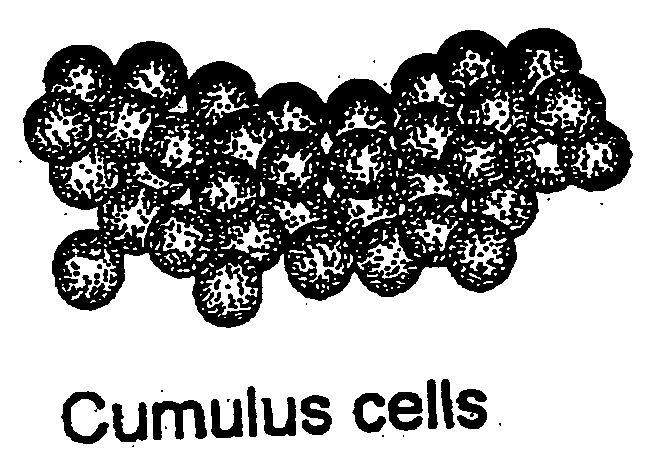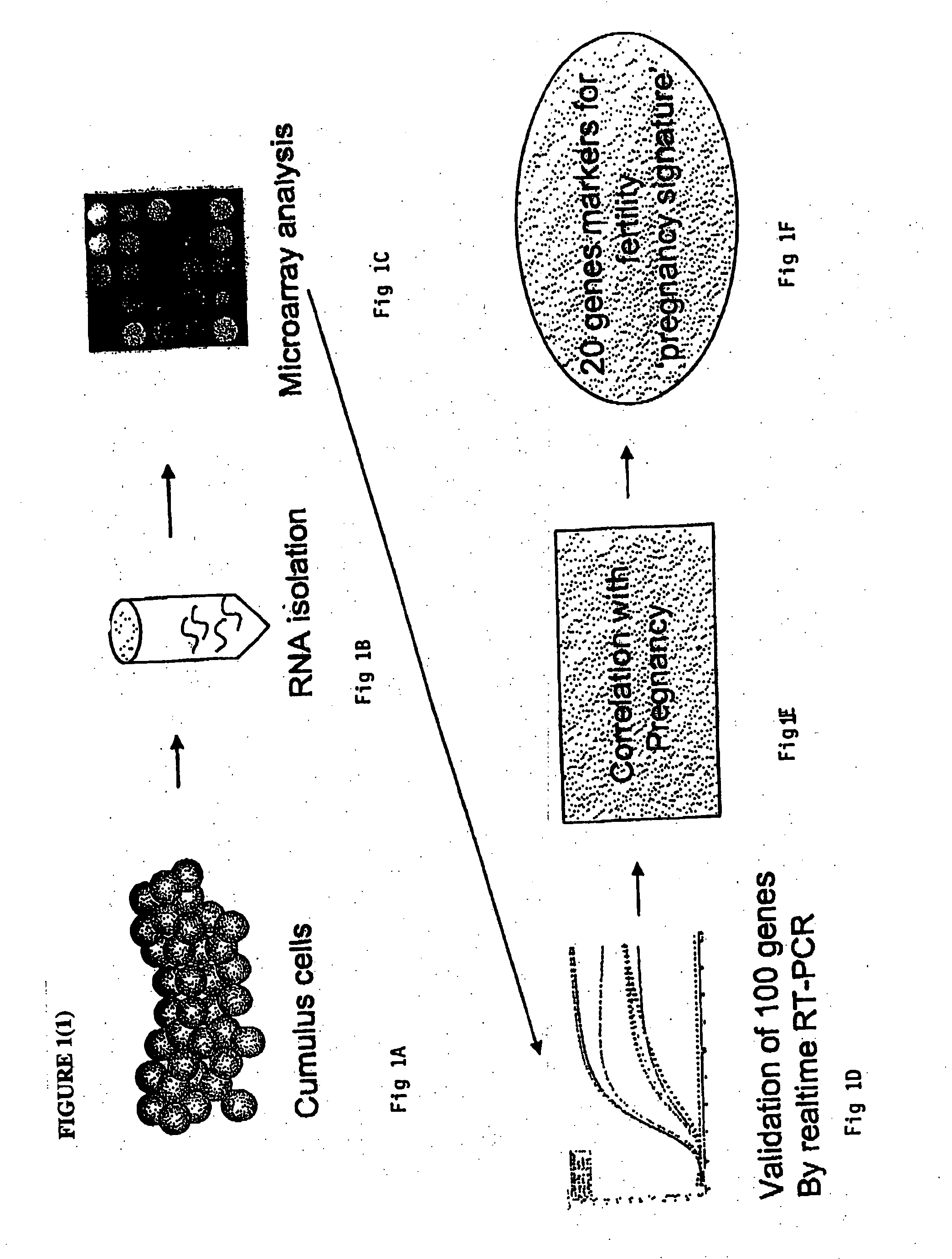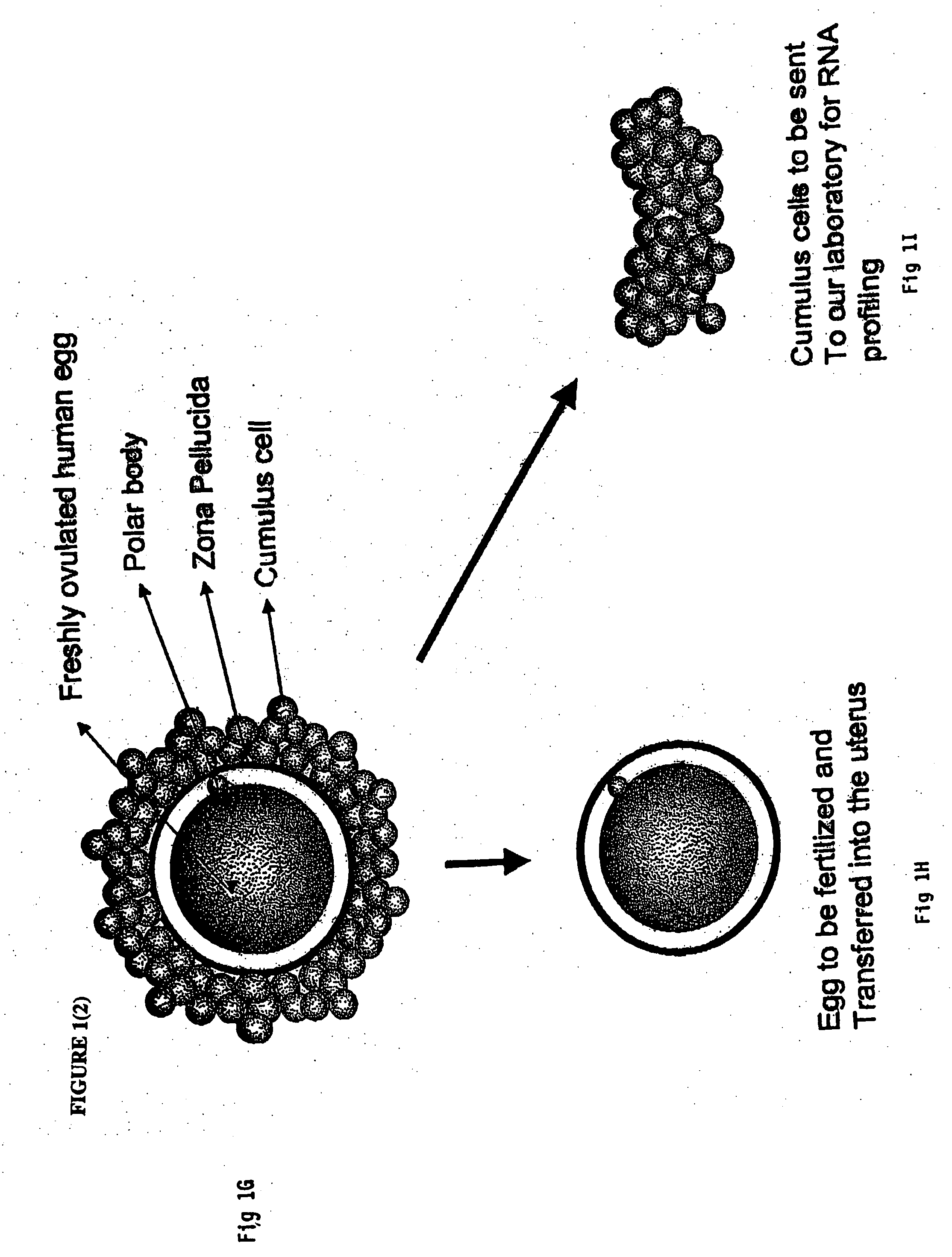Identification of genes or polypeptides the expression of which correlates to fertility, ovarian function and/or fetal/newborn viability
a technology of oocytes and genes, applied in the field of identification of genes or polypeptides the expression of which correlates to fertility, ovarian function and/or fetal/newborn viability, can solve the problem of not having available genetic procedures for identifying whether a female subject produces oocytes that are "pregnancy competent"
- Summary
- Abstract
- Description
- Claims
- Application Information
AI Technical Summary
Benefits of technology
Problems solved by technology
Method used
Image
Examples
example 2
Description
Phase I:
[0124] At the clinic, embryologists will remove the cumulus cells of two eggs and fertilize them. Embryos will be transferred to the uterus of a woman and cumulus cells sent to the laboratory for analysis. Once the cells arrive to the laboratory, RNA will be isolated and microarray analysis performed using Affymetrix platform. Pregnancy tests will be done by ultrasound on day 30 and embryonic sacs counted. There will be three kinds of outcomes: 1) 0 sacs; 2) 1 sac and 3) 2 sacs. A minimum of 30 volunteer women will participate during this phase. Ten with no sacs, ten with one sac and ten with 2 sacs. Pregnancy data will be correlated with gene expression obtained from the cumulus cells isolated from those same eggs. One hundred genes that directly correlate with pregnancy--either by upregulation or downregulation--will be further analyzed using real time RT-PCR. The best 20 genes that correlate with pregnancy (positively or negatively) will be called "pregnancy si...
example 3
Identification of 3 Pregnancy Signature Genes which are Differentially Expressed by Cumulus Cells and wherein the Expression Levels of which Correlate to Pregnancy Outcome of Associated Human Oocytes
[0133] There are no prior reports describing correlations between overall gene expression in cumulus cells and pregnancy establishment of human embryos. A study essentially as described in Example 2 was conducted to identify differentially expressed genes between cumulus cells surrounding competent and noncompetent oocytes using Affymetrix GeneChip technology. To achieve this goal cumulus cells were classified according to pregnancy outcome of their matching oocytes following in vitro fertilization (IVF) treatments. The cumulus cells from 2 oocytes per patient undergoing IVF treatment were lysed and the oocytes were fertilized and transferred to the recipient women, 2 embryos per recipient with the exception of 2 that received a single embryo. Total RNA isolated from the cumulus cell lys...
PUM
| Property | Measurement | Unit |
|---|---|---|
| MRI | aaaaa | aaaaa |
| real time RT- | aaaaa | aaaaa |
| mass | aaaaa | aaaaa |
Abstract
Description
Claims
Application Information
 Login to View More
Login to View More - R&D
- Intellectual Property
- Life Sciences
- Materials
- Tech Scout
- Unparalleled Data Quality
- Higher Quality Content
- 60% Fewer Hallucinations
Browse by: Latest US Patents, China's latest patents, Technical Efficacy Thesaurus, Application Domain, Technology Topic, Popular Technical Reports.
© 2025 PatSnap. All rights reserved.Legal|Privacy policy|Modern Slavery Act Transparency Statement|Sitemap|About US| Contact US: help@patsnap.com



